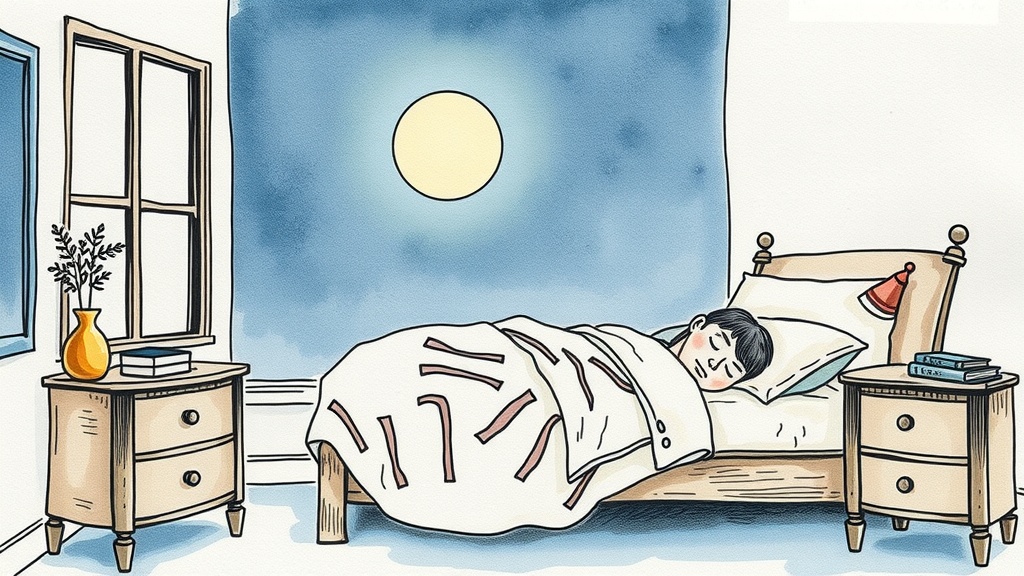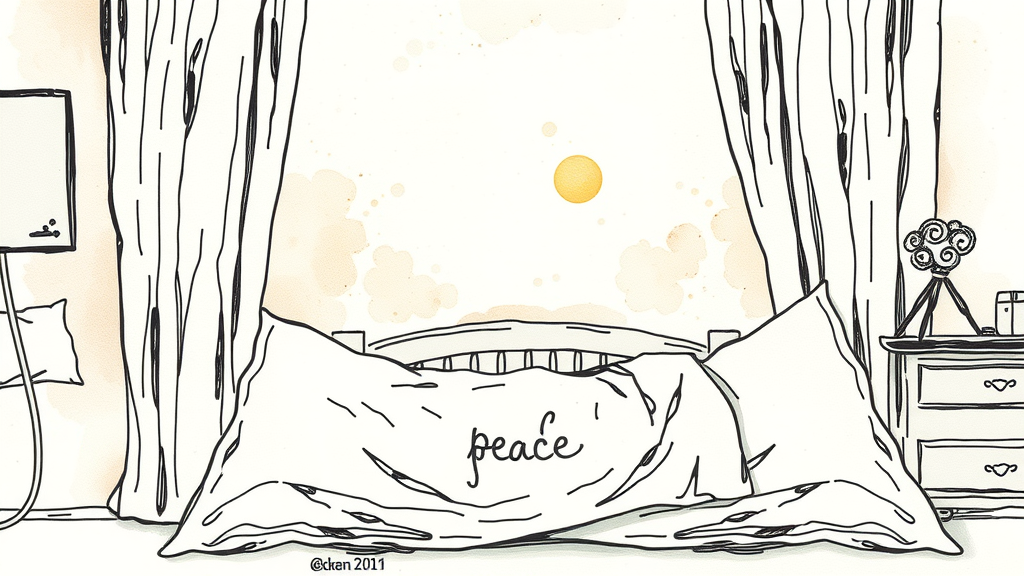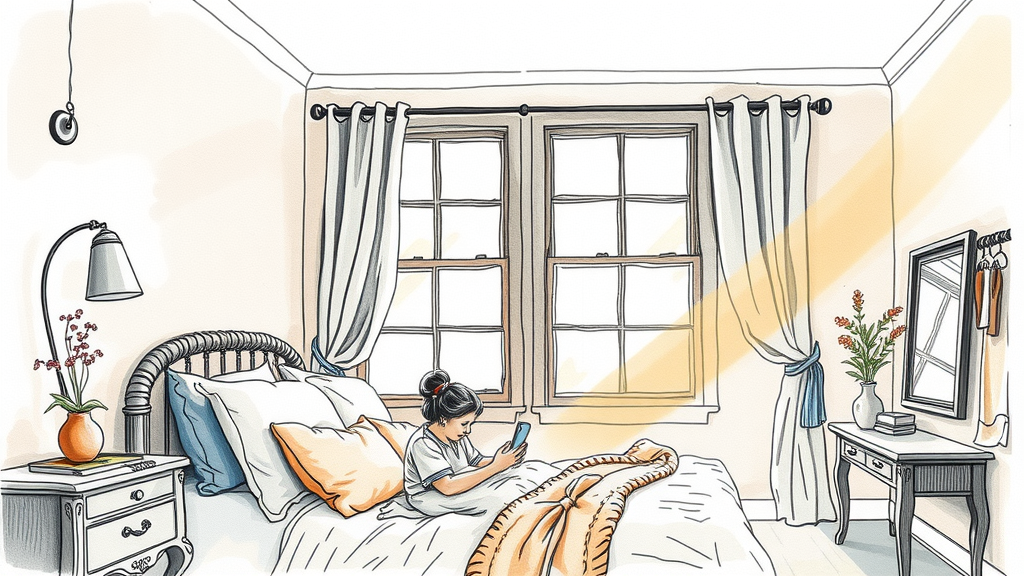· Don Schmidt · Guides · 10 min read
The Ultimate Guide to CBTI Sleep Therapy for Women in Menopause
Discover how CBTI sleep therapy can transform sleep for women in menopause. Learn practical strategies to overcome insomnia and reclaim restful nights.
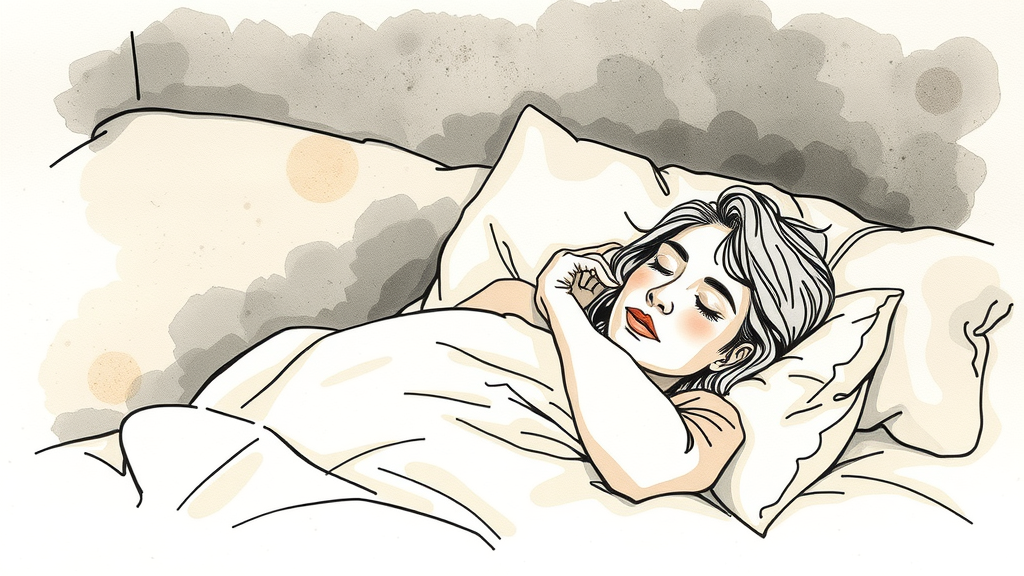
Introduction: Navigating Menopause and the Quest for Restful Sleep
Menopause, a natural and inevitable stage in a woman’s life, marks the end of her reproductive years. While often associated with hot flashes and mood swings, one of its most pervasive and debilitating symptoms is sleep disturbance. For many women, the transition through perimenopause into postmenopause can trigger chronic insomnia, making restful nights a distant memory. This guide aims to shed light on a highly effective, non-pharmacological solution: Cognitive Behavioral Therapy for Insomnia (CBTI). This specialized form of sleep therapy has emerged as a gold standard treatment, empowering women to reclaim their sleep health and overall well-being during this significant life transition.
Understanding Menopause-Related Sleep Disturbances
The complexities of menopause often intersect with various factors that disrupt sleep. Understanding these underlying causes is the first step toward finding effective solutions.
Hormonal Fluctuations and Their Impact
The primary drivers of menopausal symptoms are fluctuating hormone levels, particularly estrogen and progesterone.
- Estrogen: A decline in estrogen can lead to vasomotor symptoms like hot flashes and night sweats, which wake women from sleep. Estrogen also plays a role in mood regulation, and its decline can exacerbate anxiety and depression, both known contributors to insomnia.
- Progesterone: Progesterone has sedative properties, and its decrease during menopause can make it harder to fall and stay asleep. The loss of its calming effect often leaves women feeling more restless and agitated at night.
Other Contributing Factors
Beyond hormones, several other factors commonly contribute to sleep issues during menopause:
- Anxiety and Mood Changes: The hormonal shifts can directly impact neurotransmitters involved in mood, leading to increased anxiety, irritability, and depressive symptoms. These emotional disturbances frequently manifest as difficulty initiating or maintaining sleep. If you’ve struggled with your sleep due to persistent worry, you might find it helpful to explore specific CBTI sleep therapy for managing anxiety-induced insomnia.
- Chronic Pain and Discomfort: Menopause can sometimes be accompanied by increased joint pain, headaches, or other physical discomforts that make it difficult to get comfortable in bed. Understanding how to manage sleep with such physical challenges is crucial; exploring strategies for people with chronic pain can provide valuable insights.
- Lifestyle Factors: Habits developed over a lifetime, such as irregular sleep schedules, excessive caffeine or alcohol consumption, and lack of physical activity, can worsen menopausal sleep issues.
- Age-Related Sleep Changes: While distinct from menopause, the natural aging process also brings changes in sleep architecture, such as lighter sleep and more awakenings. This means that a woman in menopause might be dealing with both age-related and menopause-specific sleep challenges. CBTI is highly adaptable and has proven effective even for older individuals, demonstrating its broad applicability, as seen in guides like the ultimate guide to CBTI sleep therapy for seniors.
What is CBTI Sleep Therapy? A Powerful Non-Pharmacological Approach
Cognitive Behavioral Therapy for Insomnia (CBTI) is a structured, evidence-based treatment that helps individuals identify and replace thoughts and behaviors that hinder sleep with habits that promote healthy sleep. Unlike sleep medications, which often provide temporary relief, CBTI addresses the root causes of insomnia, leading to lasting improvements. To understand the foundational principles, it’s beneficial to learn more about what is CBTI and its core components.
CBTI is typically delivered over several sessions (e.g., 6-8 sessions) by a trained therapist. It’s a highly individualized approach, recognizing that while menopausal symptoms may be shared, each woman’s experience with insomnia is unique.
Key Components of CBTI Tailored for Menopause
CBTI comprises several core strategies, each designed to tackle different aspects of insomnia. When applied to menopausal women, these components are often nuanced to address specific challenges.
Sleep Restriction Therapy (SRT)
Often counterintuitive, SRT involves temporarily reducing the time spent in bed to increase sleep drive and consolidate sleep. For a woman experiencing fragmented sleep due to hot flashes, this might mean adjusting bedtime and wake-up times to align with her actual sleep capacity, gradually expanding the sleep window as sleep efficiency improves. This helps reduce the frustration of lying awake and associates the bed more strongly with sleep.
Stimulus Control Therapy (SCT)
SCT aims to re-establish the bed and bedroom as cues for sleep and sex only. This involves specific rules like:
- Going to bed only when sleepy.
- Getting out of bed if unable to sleep after 15-20 minutes and engaging in a relaxing activity elsewhere.
- Avoiding naps.
- Using the bed only for sleep and sex.
This component is particularly important for women who find themselves lying awake worrying about menopausal symptoms or other life stressors.
Cognitive Restructuring
This component addresses the negative thoughts and beliefs about sleep that often develop with chronic insomnia. For menopausal women, this might include beliefs like “I’ll never sleep well again because of my hot flashes” or “I need 8 hours of sleep, or I’ll be miserable tomorrow.” Cognitive restructuring helps identify these unhelpful thoughts and replace them with more realistic and positive ones, reducing sleep-related anxiety.
Sleep Hygiene Education
While good sleep hygiene alone rarely cures chronic insomnia, it provides a crucial foundation. CBTI reinforces best practices, specifically adapting them for menopausal women:
- Maintaining a consistent sleep schedule, even on weekends.
- Creating a cool, dark, and quiet sleep environment – vital for managing night sweats.
- Avoiding caffeine and alcohol, especially in the evening, as they can worsen hot flashes and sleep fragmentation.
- Incorporating regular physical activity, but avoiding intense exercise close to bedtime.
Relaxation Techniques
Learning and practicing relaxation techniques can help calm the mind and body before bed. Techniques like progressive muscle relaxation, diaphragmatic breathing, mindfulness meditation, or guided imagery can be powerful tools for managing anxiety and promoting sleep onset. For women dealing with the heightened stress and anxiety often associated with menopause, these skills are invaluable.
Implementing CBTI in Your Daily Life: Practical Steps
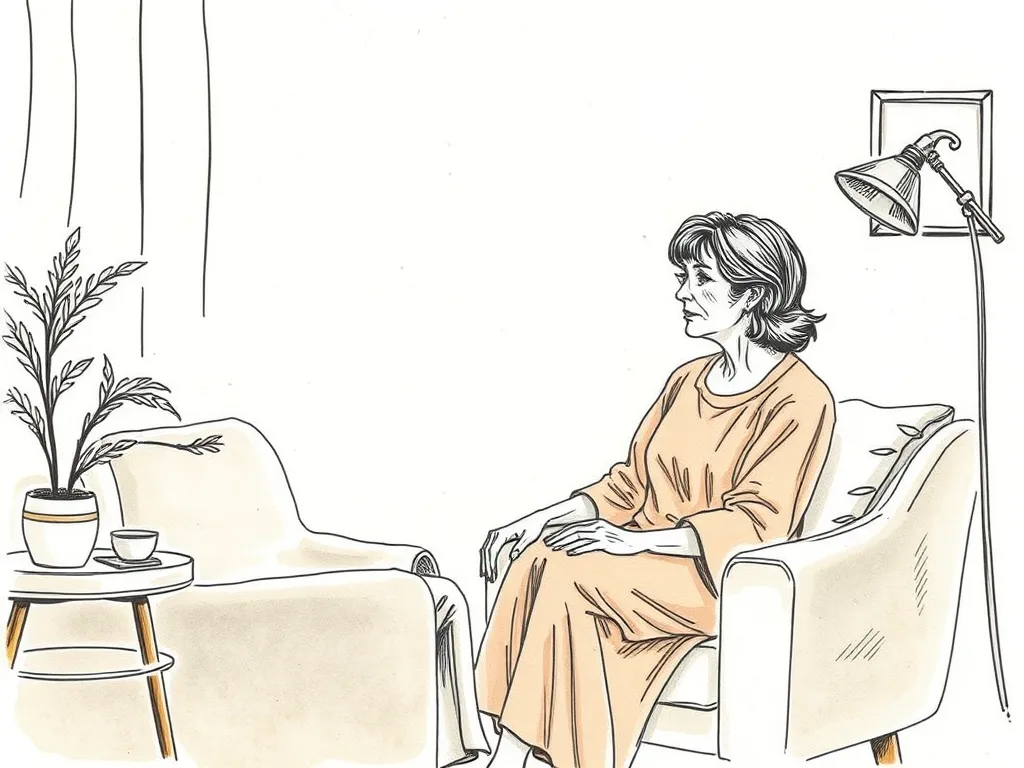
Embarking on a CBTI program requires commitment and patience, but the long-term benefits are well worth the effort.
Preparing for CBTI: Consultation and Assessment
The first step is typically a consultation with a healthcare provider or a sleep specialist who can assess your sleep difficulties, rule out other underlying medical conditions, and determine if CBTI is the right approach for you. They may recommend a sleep study if obstructive sleep apnea is suspected.
Creating a Sleep Diary
A sleep diary is a cornerstone of CBTI. For 1-2 weeks, you’ll track your sleep patterns, including bedtime, wake-up time, number of awakenings, sleep latency (time to fall asleep), and quality of sleep. This data helps you and your therapist identify specific patterns and targets for intervention.
Optimizing Your Sleep Environment
This goes beyond basic sleep hygiene. For menopausal women, consider:
- Temperature: Keep your bedroom cool. Use a fan, open windows, or invest in cooling sheets or mattresses.
- Clothing: Wear light, breathable sleepwear.
- Bedding: Use layered bedding that can be easily removed or added.
Managing Hot Flashes and Night Sweats
While CBTI focuses on behavioral aspects, managing physical symptoms is key. Strategies include:
- Wearing moisture-wicking pajamas.
- Keeping a cold pack or frozen water bottle near your bed.
- Avoiding common hot flash triggers like spicy foods, hot beverages, and alcohol before bed.
- Discussing potential non-hormonal or hormonal therapies with your doctor if symptoms are severe.
Dietary and Lifestyle Adjustments
- Caffeine and Alcohol: Reduce or eliminate these, especially in the afternoon and evening. Both can disrupt sleep and exacerbate hot flashes.
- Regular Exercise: Aim for moderate physical activity most days of the week, but complete workouts at least a few hours before bedtime.
- Mindful Eating: Avoid heavy meals close to bedtime, which can cause indigestion.
The Benefits of CBTI for Menopausal Women
The advantages of embracing CBTI extend far beyond simply getting more sleep.
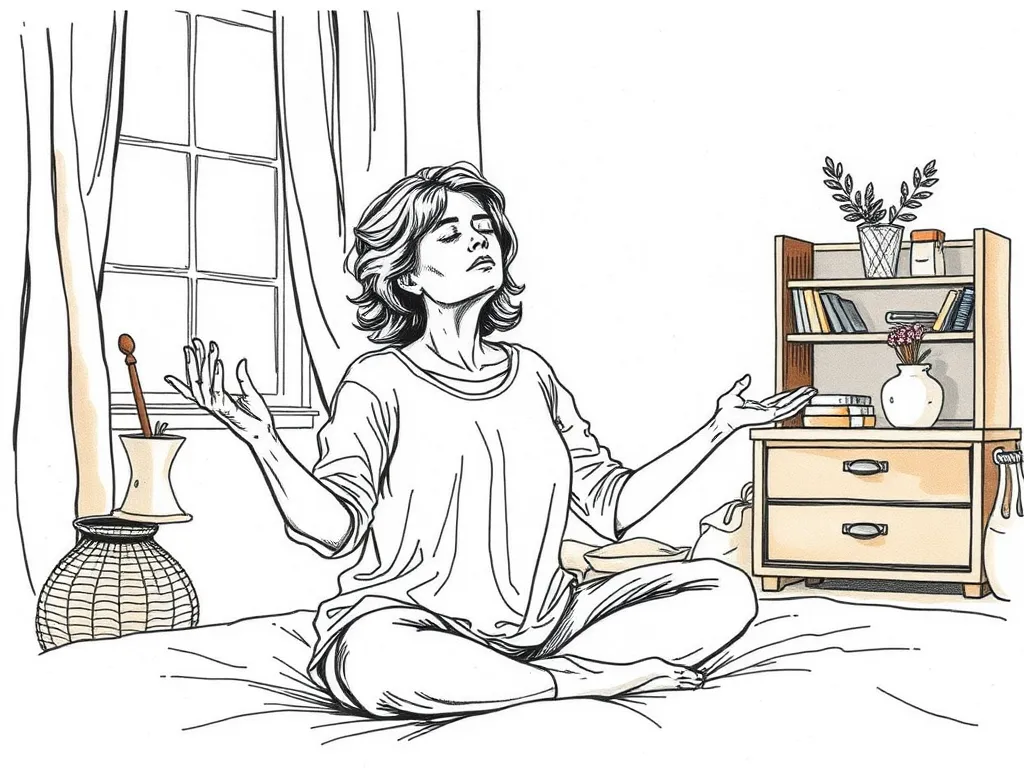
- Sustainable Sleep Improvement: Unlike medications, CBTI teaches you lifelong skills to manage your sleep.
- Reduced Reliance on Medication: Many women find they can reduce or discontinue sleep aids after CBTI.
- Improved Quality of Life: Better sleep leads to enhanced mood, increased energy, better concentration, and improved overall physical and mental health.
- Addresses Root Causes: CBTI tackles the underlying behavioral and cognitive factors contributing to insomnia, rather than just masking symptoms.
Overcoming Common Challenges and Sticking with CBTI
CBTI requires commitment. Some initial steps, like sleep restriction, can feel challenging as they temporarily reduce sleep.
- Patience and Consistency: Results aren’t instant. Stick with the program consistently, even when it feels difficult.
- Professional Guidance: Working with a trained CBTI therapist is highly recommended, as they can provide personalized guidance, adjust strategies, and offer support through the process.
- Open Communication: Discuss any difficulties or setbacks with your therapist. They can help you troubleshoot and stay motivated.
Beyond CBTI: A Holistic Approach to Menopausal Well-being
While CBTI is incredibly effective for insomnia, a holistic approach often yields the best results for overall well-being during menopause. This might include:
- Hormone Replacement Therapy (HRT): For some women, HRT can significantly alleviate menopausal symptoms, including hot flashes, which indirectly improves sleep. Discuss this option with your doctor.
- Mind-Body Practices: Continuing relaxation techniques, yoga, or tai chi can help manage stress and promote overall balance.
- Nutrition: A balanced diet rich in fruits, vegetables, and whole grains supports overall health.
- Social Support: Connecting with other women going through menopause can provide valuable emotional support and shared strategies.
Frequently Asked Questions (FAQ) About CBTI for Menopausal Women
Q1: How long does CBTI take to work for menopausal insomnia?
A1: While individual results vary, many women begin to see noticeable improvements in their sleep patterns within 2-4 weeks of starting CBTI. Significant and lasting changes often occur within 6-8 weeks of consistent application of the techniques. It’s a gradual process, but the improvements are typically sustainable.
Q2: Is CBTI effective for everyone experiencing menopausal insomnia?
A2: CBTI is widely recognized as the most effective non-pharmacological treatment for chronic insomnia and has a high success rate, including for menopausal women. However, its effectiveness can depend on adherence to the program, the presence of other untreated medical conditions, and individual factors. Most people benefit significantly, but some may require adjustments to the treatment plan or additional interventions.
Q3: Can I combine CBTI with hormone replacement therapy (HRT)?
A3: Yes, CBTI can be safely and effectively combined with hormone replacement therapy (HRT) or other menopausal treatments. HRT addresses hormonal symptoms like hot flashes, which can disrupt sleep, while CBTI targets the behavioral and cognitive factors of insomnia. Combining approaches can often provide more comprehensive relief and improve overall sleep quality. Always consult with your healthcare provider to discuss the best treatment plan for your specific needs.
Q4: Where can I find a qualified CBTI therapist specializing in women’s health or menopause?
A4: You can start by asking your primary care physician or gynecologist for recommendations. Online directories of sleep psychologists or behavioral sleep medicine specialists, such as those from the Society of Behavioral Sleep Medicine (SBSM) or the American Academy of Sleep Medicine (AASM), often allow you to search for specialists by location and expertise. Some therapists also specialize in women’s health or reproductive mental health, which may include menopausal sleep issues.
Q5: Are there any side effects of CBTI?
A5: CBTI is generally considered very safe with minimal side effects. The most common “side effect” is initial temporary sleep deprivation, especially during the sleep restriction phase, which can lead to increased daytime sleepiness or fatigue. This is a deliberate part of the therapy designed to build sleep drive and typically subsides as sleep efficiency improves. Compared to sleep medications, CBTI avoids risks like dependence, withdrawal, or residual grogginess.
Conclusion: Embracing Rest and Reclaiming Your Nights
Menopause is a journey, and while it presents unique challenges, the promise of restful, restorative sleep is well within reach. CBTI sleep therapy offers a powerful, evidence-based pathway to overcoming insomnia, empowering you with the tools and strategies to navigate this transition with greater ease and vitality. By understanding the interplay of hormones and habits, and by committing to the principles of CBTI, you can reclaim your nights and embrace a future of improved well-being.
Assess Your Sleep Quality Today
Take our My Sleep Health Score assessment to get personalized insights about your sleep patterns and discover how CBT-I can help you achieve better sleep.

Don Schmidt
15+ years of experience in sleep therapy and Cognitive Behavioral Therapy for Insomnia (CBT-I). Passionate about connecting individuals struggling with sleep disorders to evidence-based, non-medical treatment solutions. Author of hundreds of articles and comprehensive guides on sleep health, CBT-I techniques, and overcoming insomnia. When not helping clients achieve better sleep, you can find me hiking with my family and dogs or enjoying a good book.
Ready to connect with a provider?
Allow us to connect you with a provider who can help.
